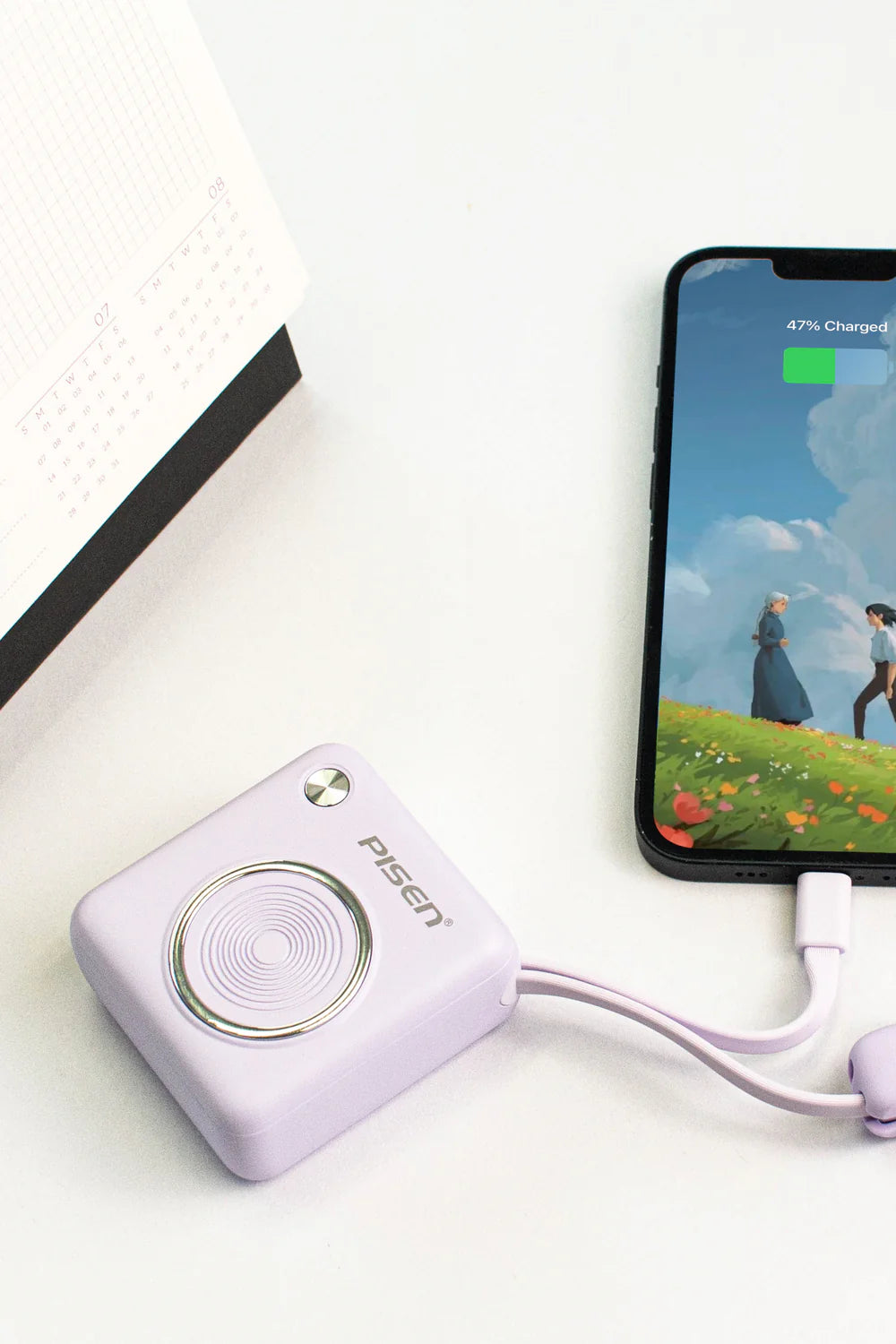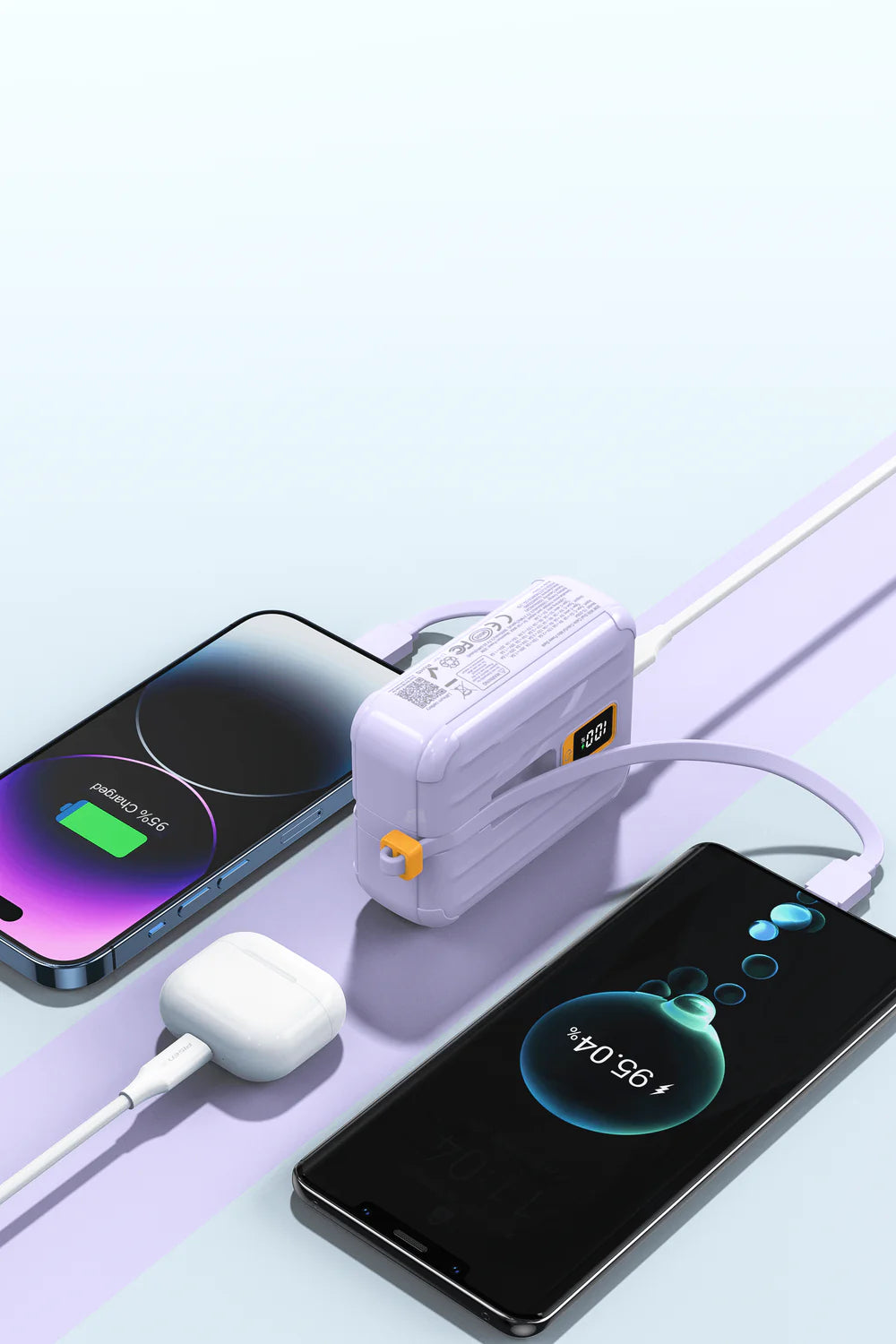In today's hyper-connected world, power banks aren't just an added convenience; they've become an essential lifeline. Whether you're in the middle of an urgent work call, relying on your phone for navigation, or recording precious memories, a power bank ensures your devices stay charged and your digital life remains uninterrupted.
However, like all electronics, power banks have a finite lifespan. The question is, how can you make your power bank last longer and perform better?
In this guide, we will walk you through the factors that determine how long your power bank will last and reveal a collection of tried-and-true tips and tricks. These will help you maintain your power bank in peak condition, ensuring it's always primed and ready to provide that much-needed power boost, no matter where life takes you.
How does a Power Bank Work?
To better understand the factors that might cause a power bank to wear and tear, let's first demystify how it functions. A power bank is essentially a portable energy storage device. It consists of a rechargeable battery, usually a lithium-ion or lithium-polymer battery, which stores electrical energy. When you connect your device to the power bank, a circuit within the power bank regulates the voltage and current flow. This ensures that the power transferred to your device is at the appropriate level, preventing over- or under-charging.
To recharge the power bank, you simply plug it into an electrical outlet. During this process, electrical energy undergoes a fascinating transformation, morphing into chemical energy that's neatly stored within the battery, ready to be released when needed.
5 Things Your Power Bank Can't Stand
Now that we've peeled back the curtain on how a power bank works, it's much easier to understand the things that can harm it.

1. Extreme Temperatures
First on the list is extreme temperatures. Power banks are like Goldilocks—they prefer things to be just right. High temperatures, such as those in direct sunlight or near heat sources like radiators or heaters, can cause the chemical reactions inside the battery to speed up in an uncontrolled way. This not only shortens the battery's lifespan but can also lead to dangerous situations like overheating or even explosions. On the other hand, extremely cold temperatures can also be a problem. When it's too cold, the battery's ability to conduct electricity efficiently is reduced, and it may not be able to deliver power as effectively. So, always keep your power bank in moderate temperatures.
2. Humid Environment
Next up is the humid environment. Most power banks are not designed to be waterproof. Humidity can cause corrosion of the internal components. Think of it like rust on a metal fence—over time, the moisture-induced corrosion can break down the delicate electrical connections within the power bank, leading to malfunction or complete failure.
3. Over-Charging
Over-charging is another offender. Once your power bank is fully charged, leaving it connected to the power source for an extended period is like over-filling a gas tank. The battery cells can become stressed, leading to a decrease in their overall capacity over time. This means that your power bank won't be able to hold as much charge as it used to, reducing its effectiveness.
4. Deep Discharges
Similarly, deep dischargers is also a big no-no. Batteries, especially lithium batteries, don't like to be drained completely. When you frequently let your power bank's battery run down to almost zero before recharging, it puts a lot of stress on the battery cells. This can cause irreversible damage and shorten the battery's lifespan significantly. So, instead of leaving your power bank's battery running all the way down, give it little top-ups from time to time. This way, you're maintaining the battery's health in a more sustainable manner.
5. Wrong Charging Accessories
Finally, using the wrong charging accessories can also harm your power bank. Using chagers or cables that are not compatible can result in incorrect voltage and current being supplied. This can either over-stress the power bank's internal components or not charge it effectively. Therefore, always use the original charging cable and a charger that is rated for the power bank's requirements.
Proper Storage and Maintenance Habits Matter
Proper storage and maintenance habits are the cornerstone of ensuring your power bank serves you well for years to come. By following these simple guidelines, you can significantly extend its lifespan and maintain its optimal performance.

1. Proper Storage
First and foremost, storage location matters. As we've learned, power banks hate extreme temperatures and humidity. So, find a cool, dry place to store it. A desk drawer in your home office or a compartment in your backpack that's shielded from the elements is ideal. Avoid leaving it in your car during sweltering summer days or frigid winter nights, as the temperature fluctuations can take a toll on the battery.
2. Perform Regular Checks
Regular check-ins are essential to maintain your power bank's health and reliability. Periodically inspect the charging ports and cables for any signs of wear and tear. A frayed cable can not only cause charging issues but also pose a safety risk. And the same goes for the power bank's charging ports. Inspect whether there's any debris stuck in them. Avoid using sharp objects that could damage the delicate connectors.
3. Use Your Power Bank Often
Another important aspect is to use your power bank regularly. Lithium batteries thrive on activity. When left unused for extended periods, these batteries can experience a phenomenon called self-discharge. Even when not connected to any device, the battery gradually loses its charge over time. Regular use helps counteract this by keeping the battery's chemical reactions active and balanced.
4. Keep Your Power Bank Clean
Last but not least, cleaning your power bank is also a simple yet effective maintenance step. Use a soft, dry cloth to wipe away dust and dirt. If it's particularly dirty, you can slightly dampen the cloth with water, but make sure to dry it thoroughly before using or storing it. Never use harsh chemicals or abrasive cleaners, as they can damage the outer casing and potentially affect the internal components.
In conclusion, taking a little extra care with your power bank pays off in spades. By being mindful of its storage environment, making routine check-ups a habit, and keeping it clean and charged at an appropriate level, you'll ensure that it's always ready to provide a reliable power boost whenever you need it. These habits may seem small, but they can make a world of difference in the lifespan and performance of your power bank. So, start implementing them today and enjoy the reliable convenience your power bank brings for years to come.
Related reading: Best Power Banks for Camping, Hiking, and Outdoor Activities















Leave a comment
This site is protected by hCaptcha and the hCaptcha Privacy Policy and Terms of Service apply.